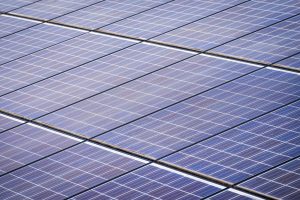Net-Zero Energy Homes: The Future of Residential Real Estate
In recent years, there has been growing concern about the impact of traditional homes on the environment and our planet’s resources. The increasing demand for energy and the focus on sustainability have led to the emergence of a new concept in residential real estate – Net-Zero Energy Homes. These innovative homes are designed to produce as much energy as they consume, making them self-sufficient and significantly reducing their carbon footprint. With the rise of the green movement and the need for more environmentally friendly solutions, Net-Zero Energy Homes are poised to become the future of residential real estate.
The Definition of Net-Zero Energy Homes
To understand the significance of Net-Zero Energy Homes, we first need to define what they are. A Net-Zero Energy Home, also known as a zero-energy or zero-net energy home, is a residential building that generates enough renewable energy to meet its energy needs over the course of a year. These homes are highly energy-efficient and use renewable resources, such as solar power, to produce the required amount of energy. This means that these homes are not only environmentally friendly but also cost-efficient for homeowners.
The Benefits of Net-Zero Energy Homes
1. Lower Energy Bills
One of the most significant advantages of a Net-Zero Energy Home is the reduction in energy bills. These homes are designed to be energy-efficient, which means they require less energy to operate. This translates into lower utility bills for homeowners, providing considerable long-term savings.
2. Energy Independence
Net-Zero Energy Homes are self-sufficient, which means they are not reliant on external sources for energy. This allows homeowners to be completely energy independent, giving them greater control over their energy usage and costs. In a time where energy prices are constantly on the rise, this advantage cannot be overstated.
3. Reduced Carbon Footprint
By producing as much energy as they consume, Net-Zero Energy Homes have a significantly reduced carbon footprint. Traditional homes account for a considerable portion of carbon emissions, making them a major contributor to climate change. Net-Zero Energy Homes help to combat this issue by utilizing renewable sources of energy, thus reducing their impact on the environment.
4. Higher Resale Value
The demand for Net-Zero Energy Homes is on the rise, and as more people become aware of their benefits, they are willing to pay a premium for these properties. This means that these homes have a higher resale value, providing homeowners with a profitable investment for the future.
The Future of Residential Real Estate
Net-Zero Energy Homes are not just a trend; they are the future of residential real estate. As governments and organizations around the world continue to prioritize sustainability, Net-Zero Energy Homes will become more prevalent in the market. In fact, according to a report by the New Buildings Institute, Net-Zero Energy Homes will account for 44% of all residential construction by 2030.
Moreover, with the rise of smart technology, these homes are becoming even more energy-efficient and convenient for homeowners. From smart thermostats to energy storage systems, these technological advancements are further increasing the appeal and functionality of Net-Zero Energy Homes.
The Challenges and Solutions
1. Higher Initial Costs
One of the main challenges in the adoption of Net-Zero Energy Homes is the higher initial costs involved. The installation of renewable energy systems and other energy-efficient features can be expensive. However, as technology advances and more homeowners invest in these homes, the costs will likely decrease, making them more accessible to the average consumer.
2. Lack of Awareness and Education
Many people are still unaware of the concept of Net-Zero Energy Homes and their benefits. This lack of awareness contributes to the slow adoption of these homes. As such, it is essential to educate the public about the advantages of Net-Zero Energy Homes and how they can play a crucial role in reducing our impact on the environment.
3. Availability of Renewable Energy Sources
Another challenge in the widespread adoption of Net-Zero Energy Homes is the availability of renewable energy sources. While solar power is the most commonly used renewable energy source, factors such as location and climate can affect its efficiency. However, with advancements in technology, the use of other renewable sources, such as wind and geothermal energy, is becoming more feasible.
In Conclusion
Net-Zero Energy Homes are not just a solution for a sustainable future; they are a necessity. As we face the effects of climate change and the depletion of non-renewable resources, the adoption of these homes is crucial. The benefits, both for homeowners and the environment, cannot be ignored. With the continued advancements in technology and the growing demand for sustainable solutions, Net-Zero Energy Homes have the potential to redefine residential real estate and lead us to a greener and more sustainable future.











